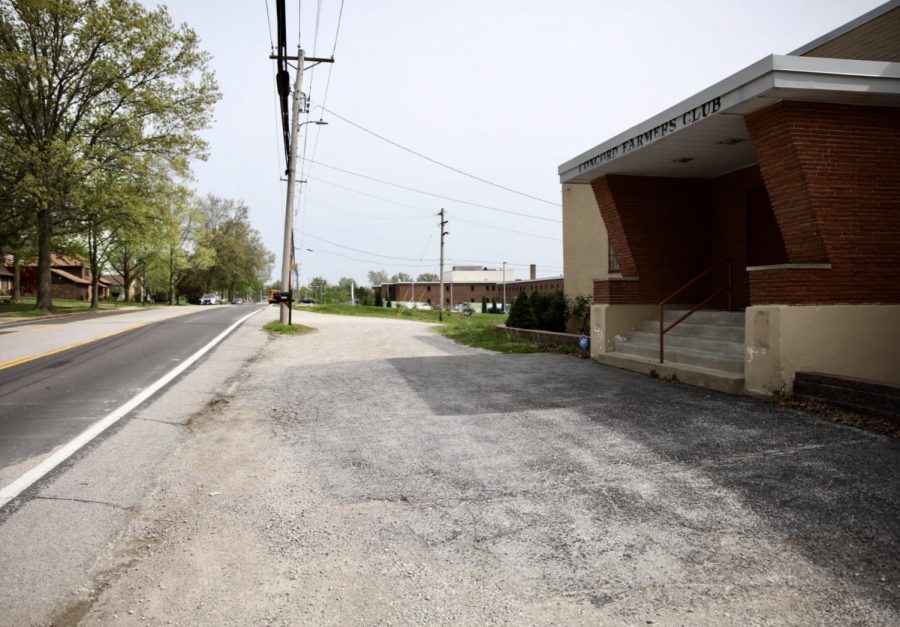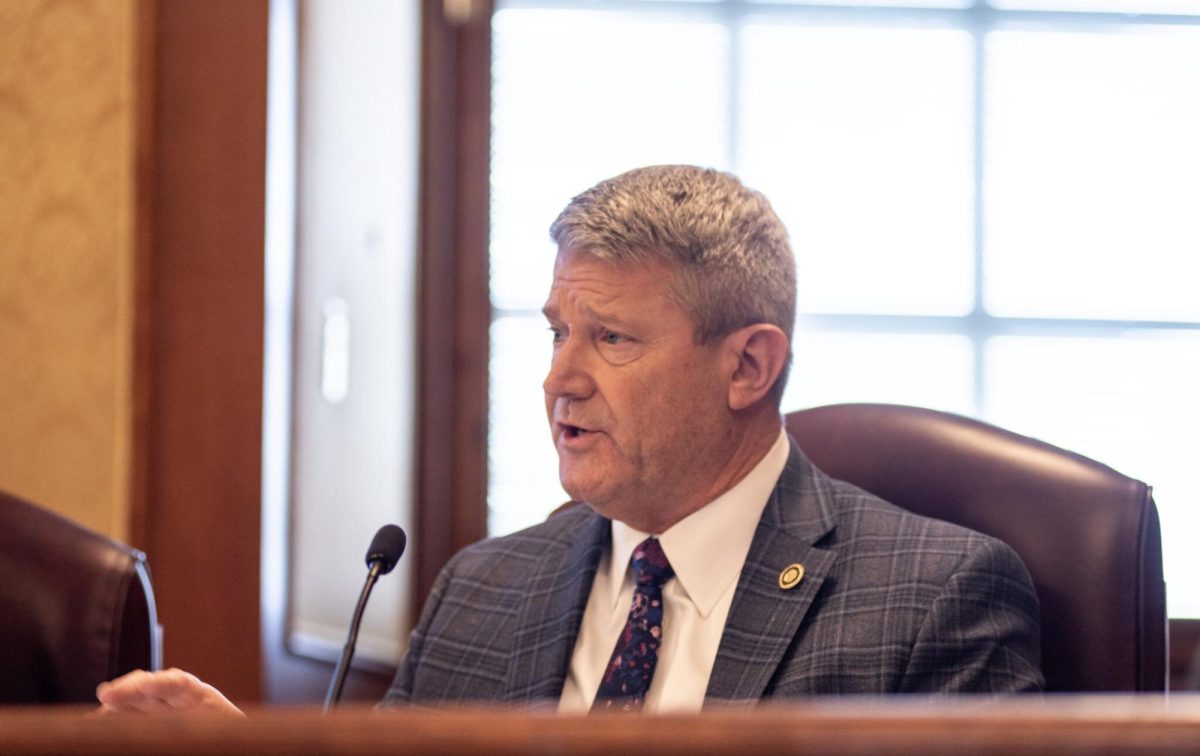By MIKE ANTHONY
Executive Editor
A proposed revised budget for the Mehlville School District’s Proposition P districtwide building improvement pro-gram will be reviewed by the Proposition P Oversight Committee.
The Board of Education decided last week to refer the proposed revised Proposition P budget that projects expenditures totaling more than $86 million to the Oversight Committee for review.
The Oversight Committee’s review of the proposed budget revisions was scheduled to take place after the Call went to press. The Oversight Committee was scheduled to meet at 6 p.m. Wednesday at the Administration Building, 3120 Lemay Ferry Road.
When the Oversight Committee met last month, Chairman Chuck Van Gronigen had contended that Mehlville administrators had not provided full disclosure to the panel of the total estimated cost of the districtwide building improvement program and related projects.
District voters in November 2000 approved Proposition P, a nearly $68.4 million districtwide building improvement program funded by a 49-cent tax-rate increase.
Under the proposed revised Proposition P budget, the total cost of the districtwide building improvement program and related projects would be $86,090,548 through June 30, 2008.
During the June 11 Oversight Committee meeting, Van Gronigen contended that he was unaware of the additional $13.6 million that is projected to be spent on Proposition P-related projects. That additional $13.6 million is projected to bring the total cost of the building improvement program to more than $86 million through mid-2008.
But Mehlville administrators and the district’s director of school/community relations, Patrick Wallace, countered that Oversight Committee members were fully aware that additional district capital funds are being spent and the total cost of the Proposition P improvements and related projects will be more than the board-approved budget of $72.4 million. District officials, however, conceded that committee members may not have been fully aware that the additional district capital funds being used are generated by the 49-cent tax-rate increase authorized by voters when Proposition P was approved.
When voters approved the 49-cent tax-rate to fund Proposition P, the cost of the districtwide improvements recommended by the Citizens’ Advisory Committee for Facilities was estimated at $68.4 million. Interest on the bond-like certificates of participation issued to fund Prop-osition P allowed the construction budget to increase to $72.4 million.
Current estimates indicate the 49-cent tax-rate increase will generate $170,165,506 through 2022, while the amount needed to retire the certificates of participation is projected at $144,346,224 — leaving a surplus of $25,819,282 in district capital funds.
The proposed revised Proposition P budget of $86,090,548 includes the board-approved budget of $72.4 million, plus another $13,690,548 in district capital funds. To date, a total of $4,898,567 of district capital funds has been spent on Proposition P-related projects.
Randy Charles, assistant superintendent for finance and the district’s chief financial officer has cited three reasons for the use of capital funds, including code requirements, hidden conditions and original budget estimates that were lacking in detail.
The code issues and hidden conditions that have resulted in extra cost to the district also have resulted in extra work for the project’s construction manager, the McCarthy Construction Co., and the architectural firm for the project, Dickinson Hussman Architects.
While the district is negotiating with the firms to reduce their fees related to the extra work, the district’s cost projections will have to be increased, according to the assistant superintendent.
Under the board-approved original Proposition P budget, McCarthy’s fee for serving as construction manager for the project was $2,835,000. Current projections indicate the final cost will be exactly that amount.
However, in the cost of Proposition P-related projects presented to the board, McCarthy is projected to be paid an additional $3,321,212 for “general conditions.” To date, the construction manager has been paid $2,534,331.
Similarly, under the board-approved Proposition P budget, the final costs of fees paid to Dickinson Hussman Architects is projected at $4,491,039. To date, the district has paid $4,198,957 to the firm.
In addition, in the cost of Prop P-related items presented to the board, Dickinson Hussman Architects is projected to be paid an additional $200,000 for “general conditions.” To date, the company has been paid $148,261.
Noting the hidden conditions that have been encountered such as abatement work and code issues, including the in-stallation of fire-suppression systems, Charles on July 21 addressed the issue of negotiating fixed-priced contracts with McCarthy and Dickinson Hussman.
“Obviously beyond the fact that there’s been added cost to the district, obviously there’s been additional cost and additional work on the part of the architects and McCarthy overseeing a much larger scope of work than we originally planned. I think it’s reasonable for us to have discussions with both the architects and McCarthy regarding their fees for the actual work,” Charles said.
“…We’ve got some ideas about maybe removing some of the work from McCarthy’s supervision a year or two down the road, in particular, the roofing work,” Charles said. “I think that is something that we can manage to do without the additional supervision from McCarthy, two years, three years down the road. Also, we’ve got to talk to Dwight (Dickinson of Dickinson Hussman Architects) about their fees for the expanded scope of work.”
Board member Rita Diekemper asked Dickinson, “How much of a responsibility do you as an architect have for say, well let’s just say code issues that maybe we had to do additional work for and so, you don’t charge us for that, do you?”
Dickinson replied, “As far as those code issues are concerned, Rita, those were issues like we talked about earlier tonight when (Mehlville Fire Protection District Fire Marshal) Ed Berkel would walk through the job after everything’s looked at and uncovered and then we’d realize that there were additional costs involved in it. We do typically charge for those as part of the overall cost of construction. That’s typical. We have our engineers get involved in it. They have to spend time going through that, sorting through what needs to be done. Many times they issue drawings for the field personnel in order to take care of those issues. Many times we have to re-route lines and those types of things.”
Diekemper interjected, “But aren’t your drawings supposed to meet code to begin with?”
Dickinson said, “A lot of times and what happened in both those high schools was that there were a lot of hidden conditions, issues that were — if you ever got above the ceiling at both those high schools and those were really tough projects, both of those were very difficult projects, there were a lot of abandoned lines up there. It was almost impossible in some instances to determine what was active, what was abandoned. Again, going through that whole process and sorting through that created additional work that we got involved in. So a lot of times it was hard, almost impossible for our engineers to pick out what some of the code violations were …”
Diekemper later asked Dickinson, “Are there times when you sometimes say that maybe we made a mistake and so therefore we’re going to reduce fee?”
Dickinson replied, “We do. We do, and, as a matter of fact, we’ve done that here in this district. And I just did a summary of some of our fees that I’ve given to Randy (Charles) and in some of those instances I have not included some of those code-related issues as part of our overall fee adjustment. So I have addressed those issues in several instances.”
Charles said, “One thing that Dwight is very politely not saying — he has to work with these guys on a regular basis — when you start dealing with the code issues, it’s not as objective as we might think it would be. Literally, they can talk to one inspector at the beginning of the project, saying here are plans for Oakville Elementary. And they look at them for three weeks, give it (their) blessing and say go ahead, it looks good. And then by the end of the project, somebody else comes in to do the final inspection and they say well, that should have never been approved and I’m not going to give you your permit. We’ve run into that a couple of times. Mehlville Senior (High) was probably the most glaring example of that … As objective as it sounds, it’s far from it.”
After the Oversight Committee reviews the proposed revised Proposition P budget, it will be considered by the school board.
























